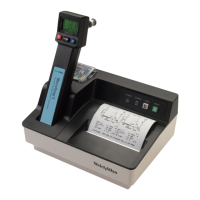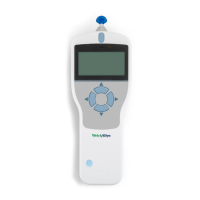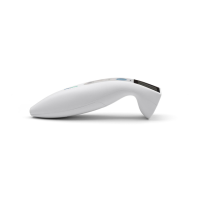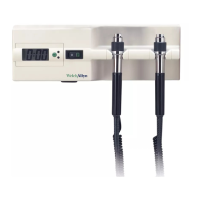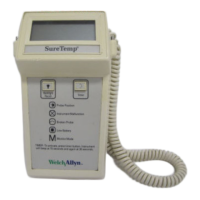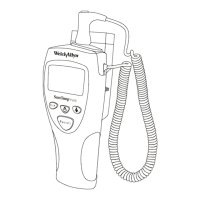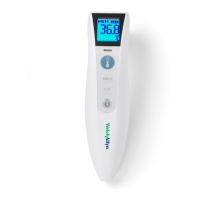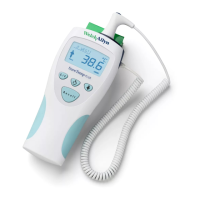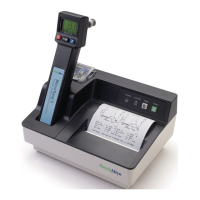
Do you have a question about the Welch Allyn MicroTymp and is the answer not in the manual?
| Measurement Method | Infrared |
|---|---|
| Battery Life | Approximately 1000 measurements |
| Type | Tympanic (ear) thermometer |
| Display | LCD |
| Measurement | Body temperature |
| Memory | Last reading memory |
| Battery Type | 2 AAA batteries |
Details on recharging using Welch Allyn charging transformers.
Instructions for using the Model 71123 Audioscope Charging Stand.
Instructions for recharging the MicroTymp using the Printer/Charger.
Indicates normally functioning middle ear system.
Low peak height indicates possibility of middle ear pathologies.
Wide gradient indicates possibility of middle ear effusion.
High peak height indicates possibility of tympanic membrane abnormalities.
Large ear canal volume suggests perforation or patent tube.
Indicates eustachian tube dysfunction.
Conditions like OME, tumors, or fixation causing low admittance.
Characteristics of OME: low admittance, wide gradient, negative peak.
Neoplastic processes affecting the middle ear, often flat tympanogram.
Fixation of ossicles due to tympanosclerosis or otosclerosis.
Blockage preventing pressure change, resulting in flat tympanogram.
Flat tympanogram due to pressure escaping.
Abnormalities like tympanic membrane issues or ossicular disruption.
Thinning or absence of lamina propria causes high admittance.
Disruption of ossicles leads to higher admittance.
History of ear pain or discharge warrants immediate medical referral.
Inspection for structural defects or abnormalities requiring referral.
Tests hearing levels to detect middle ear disease or hearing loss.
Low static admittance requires retest and possible referral.
Large volume suggests perforation/patent tube, warrants referral.
Abnormal gradient requires retest and possible referral.
Instructions for cleaning the MicroTymp probe and tips.
Instructions for cleaning the Printer/Charger unit.
Notes on cleaning charging transformers.
